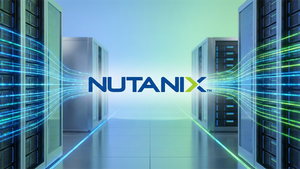
The financial markets are witnessing a fascinating divergence in the cryptocurrency space, highlighted by Digitap's ($TAP) groundbreaking integration of its no-KYC (Know Your Customer) card with Google Pay, and Binance Coin's ($BNB) impressive surge past the $1,000 mark. These two events, unfolding in late 2025, underscore distinct yet equally impactful innovations in crypto accessibility and market dynamics. While Digitap aims to democratize everyday crypto spending by dismantling traditional barriers, BNB's rally reflects the maturation and institutional embrace of a robust blockchain ecosystem.
Digitap's successful onboarding with its no-KYC card on Google Pay immediately lowers the barrier to entry for millions, enhancing financial inclusion and enabling effortless crypto-to-fiat conversions for daily utility. This move blurs the lines between traditional finance and the crypto world, promising cost-effective cross-border payments and a new era of financial privacy. Concurrently, BNB, the native token of the Binance ecosystem, has defied any notion of a "flat" price, instead experiencing a significant rally driven by strong institutional adoption, an expanding ecosystem, and strategic regulatory navigation. This surge, while punctuated by natural periods of consolidation, signals a robust and maturing asset.
Detailed Coverage: Digitap's Innovation and BNB's Ascent
Digitap has introduced an innovative "omni-bank" platform, which is now live and fully integrated with Google Pay and Apple Pay. This platform offers multi-currency accounts and a Visa-backed debit card that notably requires no KYC verification for onboarding. Users can generate unlimited virtual cards within minutes, enabling them to spend cryptocurrencies as easily as fiat in daily transactions, both online and in physical stores. This "omni-bank" approach is designed to unify fiat and crypto within a single, seamless platform, providing features like instant crypto-to-fiat conversions and regulated offshore accounts. The project's tokenomics, centered around its $TAP token, include a fixed supply and a buy-back-and-burn mechanism funded by 50% of the platform's profits, aiming to increase scarcity and value. The application's live status as of September 2025, even during its presale phase, has garnered significant attention, with a roadmap including staking features and app beta testing in Q4 2025, and further expansion into Asia and Europe by Q3 2026. Key players in this development include Digitap, Visa, Google, and Apple, alongside a broader ecosystem of consumers, merchants, and financial service providers. Initial market reactions have been overwhelmingly positive, with analysts projecting substantial growth and hailing $TAP as a "utility altcoin" with a tangible, working product.
In stark contrast to a "flat" price, Binance Coin ($BNB) has experienced a remarkable rally in late 2025, surging past the $1,000 mark and reaching an all-time high of $1,087.30 on September 22, 2025. This impressive performance, representing over a 50% increase in Q3 2025 alone, is attributed to a confluence of factors. The robust growth and utility of the BNB Chain have been pivotal, evidenced by an all-time high of 17.4 million weekly active addresses and a significant revival in decentralized finance (DeFi) activity. Institutional adoption has also played a crucial role, with firms like Nano Labs and Windtree Therapeutics allocating capital to BNB treasuries, and Franklin Templeton expanding services to the BNB Chain. Furthermore, Binance's strategic use of deflationary tokenomics, including regular token burns, reduces supply and creates upward price pressure. Regulatory clarity, such as the U.S. SEC's dismissal of its 2023 lawsuit against Binance in June 2025 and speculation about the U.S. Department of Justice (DOJ) removing compliance oversight, has also fueled investor confidence. Technical upgrades aimed at enhancing speed and scalability, along with broader market tailwinds from the anticipated Bitcoin halving, have further propelled $BNB's ascent. The market's reaction has been one of excitement and bullish sentiment, with many analysts setting ambitious price targets and observing "whale accumulation waves" in response to these positive developments.
Market Impact: Winners, Losers, and Strategic Shifts
Digitap's ($TAP) innovative no-KYC card integration with Google Pay is poised to create clear winners and losers across the financial landscape. Digitap itself stands as a primary winner, attracting users who prioritize privacy and efficiency, particularly the unbanked and those in regions with limited traditional banking infrastructure. Google Pay and Apple Pay are direct beneficiaries, expanding their utility within the crypto-spending ecosystem, while Visa and Mastercard benefit from increased transaction volume through their card infrastructure. Privacy-focused cryptocurrency users and high-risk businesses seeking faster onboarding and broader customer access will also find Digitap's offering highly attractive. Conversely, traditional financial institutions and legacy remittance service providers are likely to lose market share due to Digitap's significantly lower fees and streamlined onboarding. Other crypto platforms requiring full KYC for card issuance may struggle to compete, as could traditional payment gateways like Coinbase Commerce and BitPay, and even some cross-border payment competitors like XRP ($XRP) and XLM ($XLM), which Digitap aims to directly challenge.
Meanwhile, BNB's ($BNB) strong performance and ecosystem growth have profoundly impacted Binance and its ecosystem, as well as its competitors. Binance (the exchange) is the foremost winner, benefiting from increased trading volumes, a higher token valuation, and reinforced market dominance. The BNB Chain itself has emerged as one of the most active smart contract platforms, with a Total Value Locked (TVL) exceeding $11.67 billion, driven by technical upgrades and an aggressive "One BNB" strategy. Decentralized applications (dApps) within the BNB Chain ecosystem, such as PancakeSwap, Lista DAO, Venus, and Aster, are also thriving from increased user engagement and liquidity. This success puts considerable pressure on rival centralized exchanges like Coinbase ($COIN), Kraken, and Bybit, which must differentiate through stricter regulatory compliance or enhanced user experience. In the decentralized exchange (DEX) space, BNB-based perpetual protocols like Aster are intensifying competition against established players such as Hyperliquid. Among smart contract platforms, BNB Chain's focus on speed, lower costs, and comprehensive ecosystem development positions it as a formidable competitor to Ethereum ($ETH), Solana ($SOL), and other Layer-1s like Polkadot ($DOT) and Cardano ($ADA), challenging their market share and forcing them to accelerate their own scalability solutions and developer incentives.
Wider Significance: A Clash of Visions in Crypto's Evolution
These two distinct developments—Digitap's no-KYC card and BNB's robust performance—collectively illustrate a pivotal moment in the cryptocurrency industry, marked by a growing tension between the ethos of privacy and decentralization, and the increasing demands for mainstream adoption and regulatory oversight. Digitap's offering is a bold statement against the tightening global regulatory environment. While it appeals to privacy-conscious users and the unbanked, its "no-KYC" model directly challenges stringent global KYC/AML (Anti-Money Laundering) requirements, as mandated by the EU's MiCA regulation, the FATF Travel Rule, and major payment networks like Visa and Mastercard. This approach, while innovative, carries significant legal and operational risks, potentially limiting its global reach for substantial transactions.
Conversely, BNB's strong performance signifies the growing maturity of crypto ecosystems built on utility and institutional engagement. Its surge is driven by strong ecosystem utility within the expansive Binance platform, continuous growth of the BNB Chain, deflationary tokenomics, and increasing institutional adoption. This performance reinforces the idea that well-established cryptocurrencies with robust fundamentals and active development can thrive, moving beyond purely speculative trading.
These events fit into broader industry trends: first, accelerated crypto adoption and integration, as both Digitap and BNB demonstrate crypto's increasing role in daily life and global finance. Second, intensifying regulatory scrutiny, where the "no-KYC" stance clashes with a global push for transparency, leading to stricter frameworks for stablecoins (e.g., U.S. GENIUS Act) and increased oversight on centralized entities like Binance. Third, heightened competition and innovation, as Digitap disrupts payment solutions with its unique privacy-focused approach, while BNB Chain solidifies its competitive edge against other Layer-1s through ecosystem growth and performance. Potential ripple effects include other crypto card providers rethinking their KYC models, traditional finance being pressured to innovate, and Google Pay/Visa facing increased regulatory scrutiny for their association with "no-KYC" services. Historically, the crypto industry has seen numerous early crypto debit cards emerge and then face severe restrictions due to evolving regulatory demands, with the current mandate for KYC on all crypto card issuers by Visa and Mastercard being a direct response. BNB's sustained growth, in contrast to the collapse of other exchange tokens like FTT ($FTT), highlights the resilience of ecosystems built on strong utility and proactive regulatory engagement.
The Road Ahead: Navigating Innovation and Regulation
The short-term outlook for Digitap's ($TAP) no-KYC Google Pay card points to accelerated adoption in emerging markets, where it can significantly disrupt the cross-border payments sector by offering dramatically lower fees. Its strong presale performance and live application underscore immediate utility. Long-term, Digitap could play a crucial role in enhanced financial inclusion, putting competitive pressure on traditional banks and potentially driving an evolution in digital identity frameworks that balance privacy with compliance.
For BNB ($BNB), the short-term anticipates continued ecosystem expansion, further fueled by regulatory clarity and the broader altcoin season. Its increasing utility across the Binance ecosystem, from discounted trading fees to powering transactions on the BNB Chain, will solidify its market position. Long-term, increased institutional adoption and Binance's commitment to compliance and technological advancements (like the Zerobase project leveraging zero-knowledge technology) could cement $BNB's role as a central infrastructure layer for Web3 applications.
Strategic pivots will be essential for all market players. Digitap may need to implement sophisticated, behind-the-scenes compliance layering for different jurisdictions or seek partnerships with regulated traditional financial institutions to ensure longevity and expand reach. Google may need to clarify its stance on no-KYC crypto payment solutions within Google Pay, potentially enhancing due diligence for third-party integrations and leveraging its AI capabilities for risk management. Binance will likely continue its strategic repositioning towards full regulatory alignment, innovating in compliant privacy solutions, and expanding its range of regulated offerings in key jurisdictions. Other market players, including traditional financial institutions and Fintechs, must rapidly integrate crypto capabilities, embrace hybrid "Web 2.5" models, and adapt to mobile-first, instant payment trends to remain competitive.
Emerging market opportunities are vast, particularly for financial inclusion in developing nations through cost-effective remittances and new revenue streams for businesses. However, challenges persist, including regulatory ambiguity across fragmented jurisdictions, the need for enhanced digital literacy and consumer protection, robust infrastructure development, and managing cryptocurrency volatility. The competitive landscape will see the rise of "omni-banks" and integrated platforms, intensified competition from PayTechs, and potential consolidation through mergers and acquisitions. Despite increasing regulation, a niche market for no-KYC services will likely persist, catering to privacy-conscious users and those in less stringent jurisdictions, albeit with associated legal complexities.
Conclusion: Key Takeaways and Investor Outlook
The events surrounding Digitap's no-KYC Google Pay card and BNB's remarkable performance offer crucial insights into the current state and future trajectory of the cryptocurrency market. The key takeaway from Digitap is the undeniable demand for privacy and seamless accessibility in financial transactions, directly challenging the global regulatory push for transparency and extensive KYC/AML measures. Digitap's "omni-banking" model, offering a live product during its presale and positioning itself as an "XRP 2.0" for consumer-facing remittances, highlights a market shift towards practical, utility-driven applications that address real-world payment needs.
BNB's sustained growth past $1,000, driven by its robust ecosystem, strong network utility, and increasing institutional adoption, underscores the importance of fundamental value propositions and continuous development in the crypto space. It signals a maturing market where established cryptocurrencies with solid use cases and active communities can thrive, attracting significant capital and solidifying their role in the global financial system. The lasting impact will be a more integrated financial landscape where digital assets offer tangible utility, and platforms compete on a blend of innovation, security, and regulatory compliance.
For investors, the coming months will demand vigilance across several fronts. Regarding crypto accessibility, watch for the progress of crypto ETFs and their integration into traditional investment portfolios, as well as innovations in user experience that simplify crypto for daily spending. In regulatory developments, pay close attention to the enforcement of new KYC/AML requirements, especially concerning "no-KYC" offerings, and the evolving frameworks for stablecoins and DeFi. The balance between fostering innovation and ensuring financial security will be critical. Finally, in platform competition, monitor the rise of "omni-banking" solutions, the increasing convergence of AI and blockchain for enhanced security and analytics, and the growth of Real-World Asset (RWA) tokenization, which promises to open new investment opportunities and attract institutional capital.
This content is intended for informational purposes only and is not financial advice.







